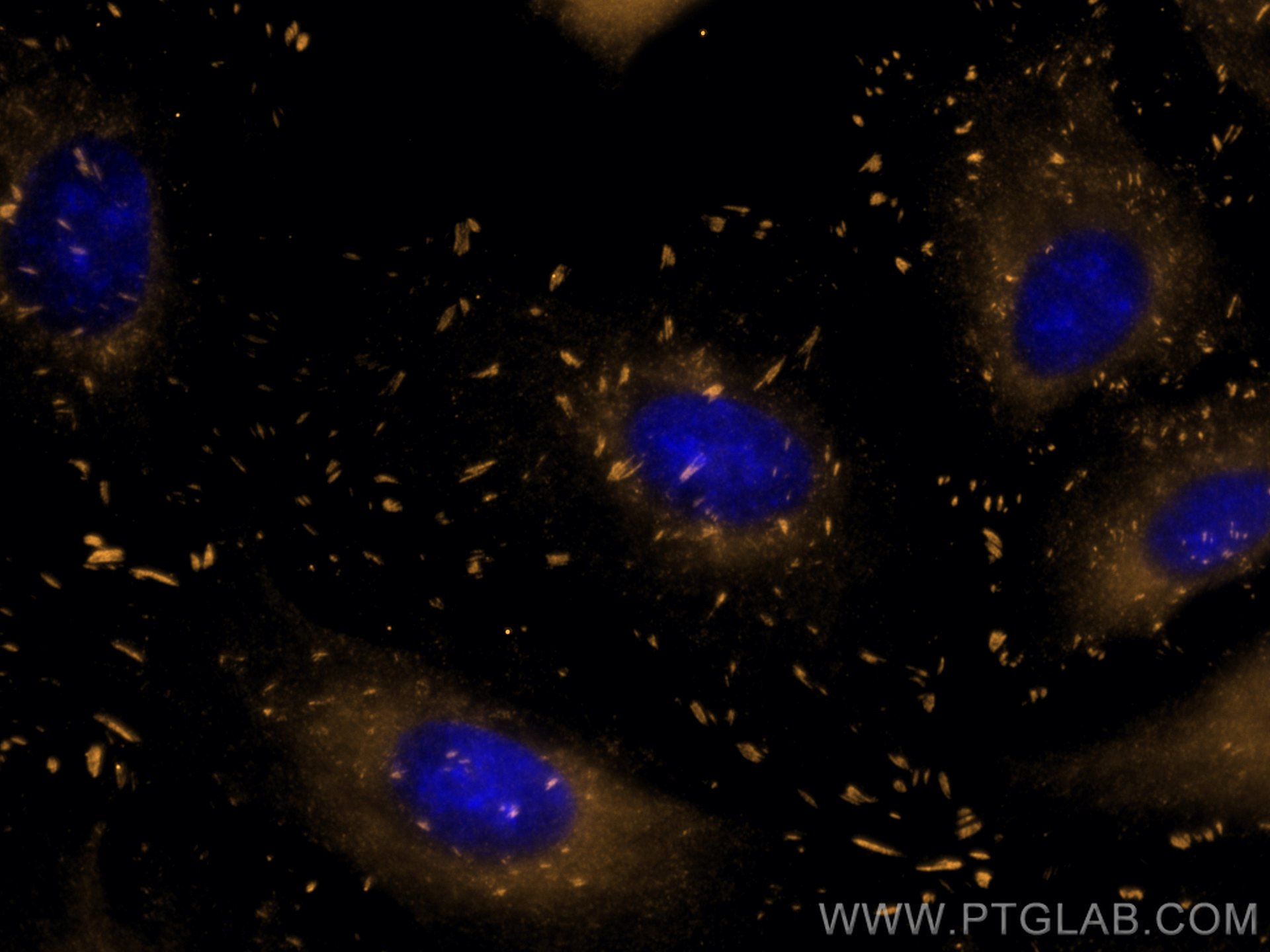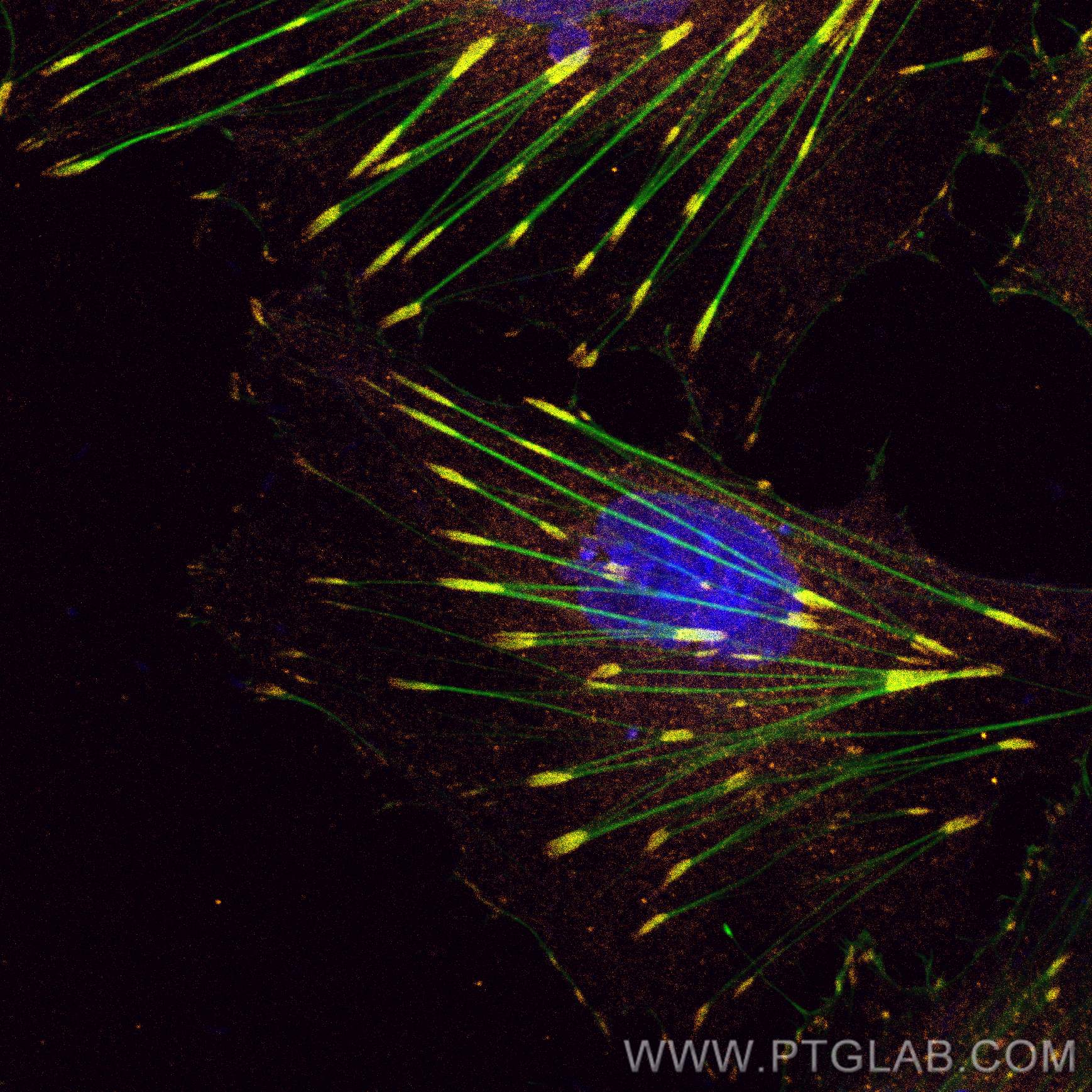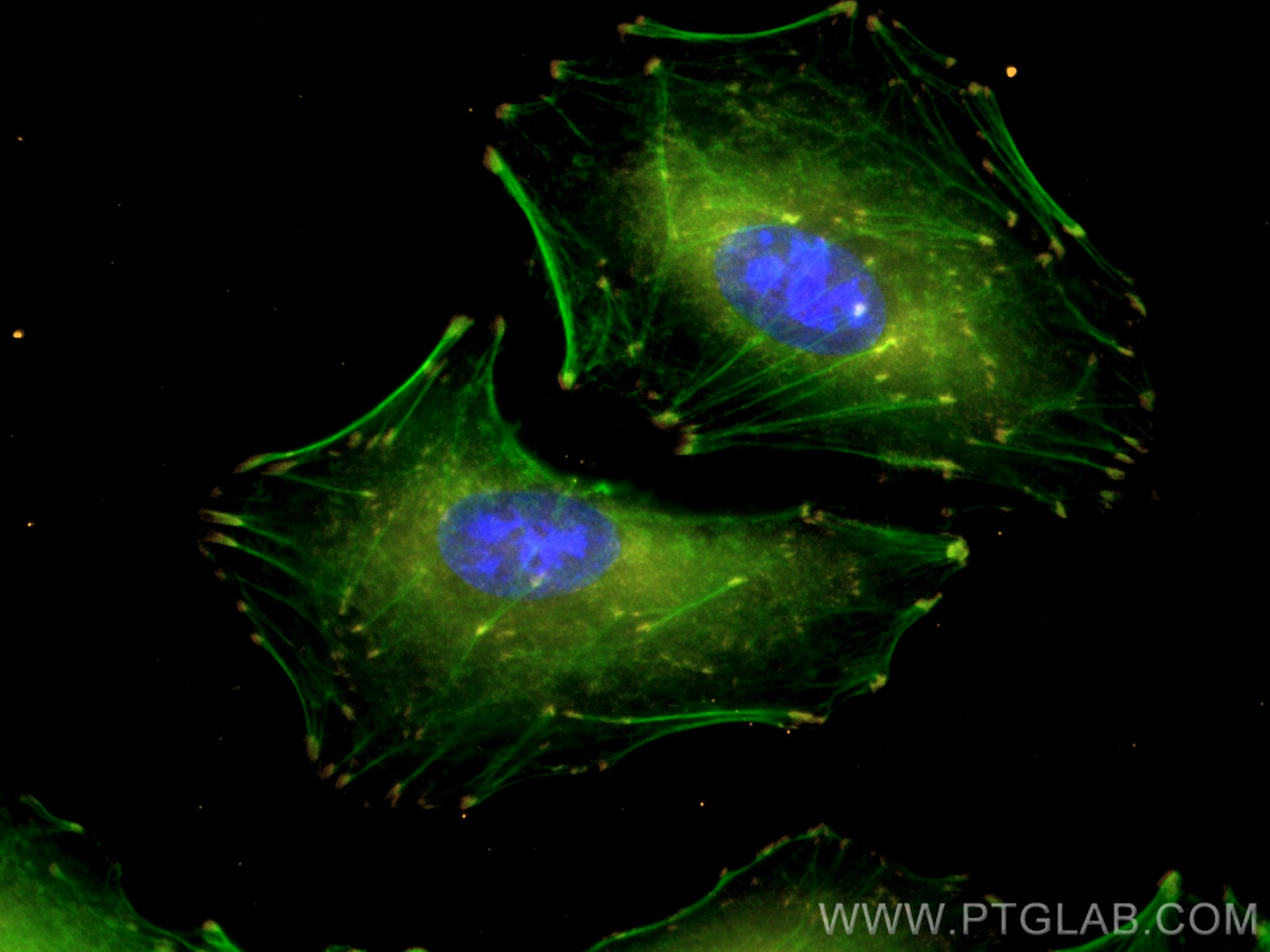验证数据展示
经过测试的应用
| Positive IF/ICC detected in | A549 cells, HUVEC cells |
推荐稀释比
| 应用 | 推荐稀释比 |
|---|---|
| Immunofluorescence (IF)/ICC | IF/ICC : 1:50-1:500 |
| It is recommended that this reagent should be titrated in each testing system to obtain optimal results. | |
| Sample-dependent, Check data in validation data gallery. | |
发表文章中的应用
| IF | See 1 publications below |
产品信息
CL555-66258 targets FAK in IF/ICC applications and shows reactivity with human, mouse, rat samples.
| 经测试应用 | IF/ICC Application Description |
| 文献引用应用 | IF |
| 经测试反应性 | human, mouse, rat |
| 文献引用反应性 | mouse |
| 免疫原 |
CatNo: Ag17966 Product name: Recombinant human FAK protein Source: e coli.-derived, PET28a Tag: 6*His Domain: 381-678 aa of BC028733 Sequence: ITAMAGSIYPGQASLLDQTDSWNHRPQEIAMWQPNVEDSTVLDLRGIGQVLPTHLMEERLIRQQQEMEEDQRWLEKEERFLKPDVRLSRGSIDREDGSLQGPIGNQHIYQPVGKPDPAAPPKKPPRPGAPGHLGSLASLSSPADSYNEGVKLKPQEISPPPTANLDRSNDKVYENVTGLVKAVIEMSSKIQPAPPEEYVPMVKEVGLALRTLLATVDETIPLLPASTHREIEMAQKLLNSDLGELINKMKLAQQYVMTSLQQEYKKQMLTAAHALAVDAKNLLDVIDQARLKMLGQTR 种属同源性预测 |
| 宿主/亚型 | Mouse / IgG2c |
| 抗体类别 | Monoclonal |
| 产品类型 | Antibody |
| 全称 | PTK2 protein tyrosine kinase 2 |
| 别名 | FADK, FADK 1, FAK, FAK1, Focal adhesion kinase 1, pp125FAK, Protein tyrosine kinase 2, PTK2, PTK2 protein tyrosine kinase 2 |
| 计算分子量 | 1052 aa, 119 kDa |
| 观测分子量 | 110 kDa |
| GenBank蛋白编号 | BC028733 |
| 基因名称 | FAK |
| Gene ID (NCBI) | 5747 |
| RRID | AB_2919682 |
| 偶联类型 | CoraLite®555 Fluorescent Dye |
| 最大激发/发射波长 | 557 nm / 570nm |
| 形式 | Liquid |
| 纯化方式 | Protein A purification |
| UNIPROT ID | Q05397 |
| 储存缓冲液 | PBS with 50% glycerol, 0.05% Proclin300, 0.5% BSA, pH 7.3. |
| 储存条件 | Store at -20°C. Avoid exposure to light. Stable for one year after shipment. Aliquoting is unnecessary for -20oC storage. |
背景介绍
FAK (Focal adhesion kinase 1) is also named as FAK1, FADK, pp125FAK, FAK and belongs to the protein kinase superfamily. It is a critical tyrosine kinase that modulates cell adhesion, migration, proliferation and survival in response to extracellular signals (PMID:19664602). It also acts as a pivotal signal 'integrator', controlling and coordinating cellular responses that include cell migration, survival, proliferation and, epithelial tissue repair after DNA damage (PMID:20966971). This protein has some isoforms produced by alternative promoter usage and alternative splicing, and the range of the molecular weights are 100-120kD and 40-60kD.
实验方案
| Product Specific Protocols | |
|---|---|
| IF protocol for CL555 FAK antibody CL555-66258 | Download protocol |
| Standard Protocols | |
|---|---|
| Click here to view our Standard Protocols |




